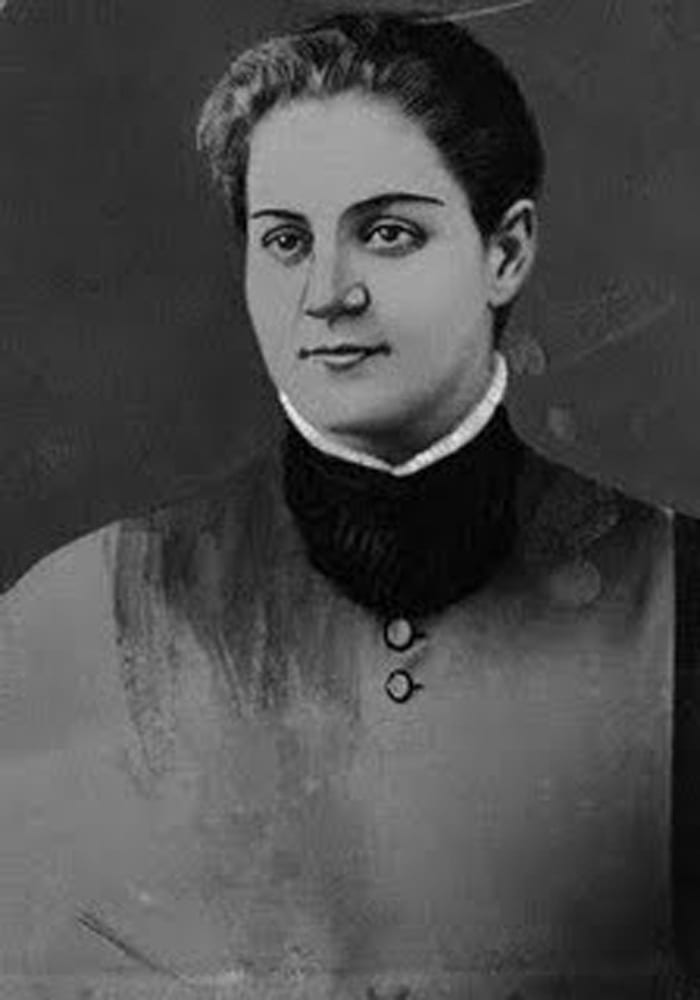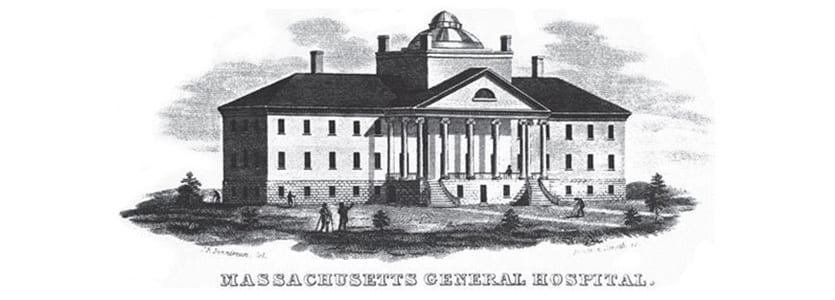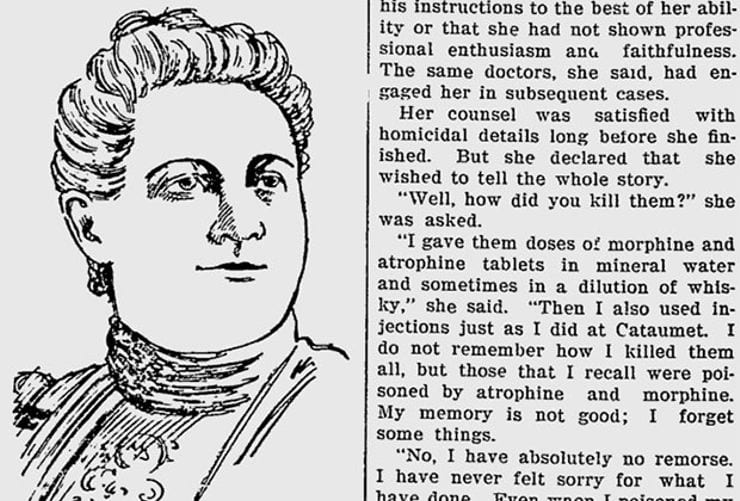Jolly Jane Toppan was never going to have a perfect life. Surrendered to a Boston orphanage and hired out to a foster family by the age of six, she was doomed to, at best, a life of servitude. But no one could have anticipated the dark places her life would lead.
Toppan grew up resenting her foster family for treating her poorly. Particularly, Toppan hated her beautiful foster sister, Elizabeth Toppan, who was beloved by both friends and family. In her mid-twenties, Toppan left the family to become a nurse at Cambridge Hospital in Massachusetts. Soon, a trail of bodies began to accumulate behind her. Before she was arrested in 1901 for the murder of an entire family, Toppan would, by her own admission, poison and kill at least 31 patients and friends.
At first, Toppan merely experimented with patients at Cambridge Hospital. She would test different levels of morphine and other narcotics on unwilling patients. She claimed this was only to test their nervous systems’ responses. Soon, however, these awful tests led to murder. Toppan began giving patients strychnine (rat poison) rather than simply increasing morphine dosages.

Photo Credit: Public Domain
Unlike many female serial killers, Toppan seemed to find a deep sense of gratification in the act of murder. She confessed that after poisoning many of her victims, she would climb in bed alongside them. One victim who survived an attempted poisoning remembered that Toppan gave her strychnine, joined her in bed and began kissing her on the face before another nurse interrupted.
Eventually, the hospital noticed—or could no longer ignore—the multiple overdoses that occurred during Jane’s watch. Because she had such a ‘jolly’ air, she was transferred to Massachusetts General rather than fired. In fact, patients who were not murdered liked Jane a great deal.
Massachusetts General dismissed Toppan in 1891, once again due to her connection with overdosed patients. By this point, Toppan had been responsible for multiple deaths. Upon her dismissal, Toppan became a private nurse—and continued her lethal ways.

Photo Credit: Public Domain
Over the next 10 years, Toppan would murder not just for pleasure but for gain.
These murders were always achieved through her preferred method of poisoning, though in some instances she put away the morphine in favor of other deadly chemicals. In 1895, Toppan poisoned her landlord. Then, in 1897, Toppan also poisoned his wife, leaving the house empty for her use.
She would continue killing throughout the end of the 19th century. She poisoned another set of landlords, a friend whose job she wanted, even her foster sister.
When Jane took down an entire family, the Davises, her ambition finally revealed her true nature. The matriarch of the family, with whom Jane was staying, was the first to die. One of the Davis daughters then went to Jane for comfort—but found herself dead instead. Within three months, the entire Davis family was in their graves.
The husband of a Davis daughter was, naturally, suspicious. He ordered a toxicology report on his wife. When the results showed that she had been poisoned, the police began looking for Toppan. She was arrested in October of 1901. She confessed to 31 murders, but was found not guilty due to insanity.

Photo Credit: Clinton Morning Age
In her confession, Jane admitted to feeling no guilt. “No, I have absolutely no remorse,” she said. “I have never felt sorry for what I have done. Even when I poisoned my dearest friends, as the Davises were, I did not feel any regret afterward. I have thought it all over and I cannot detect the slightest bit of sorrow over what I have done.”
The Lineup first published this story.






